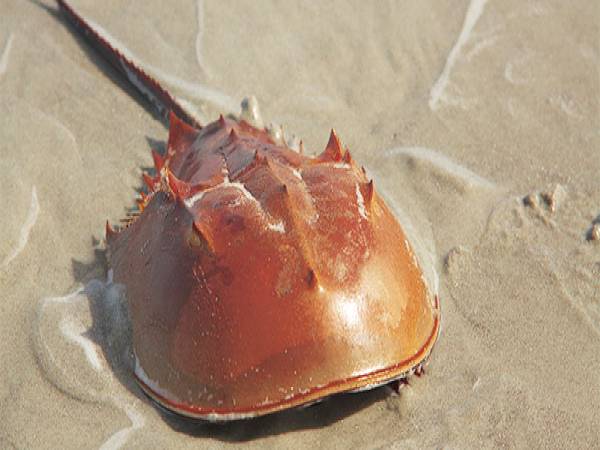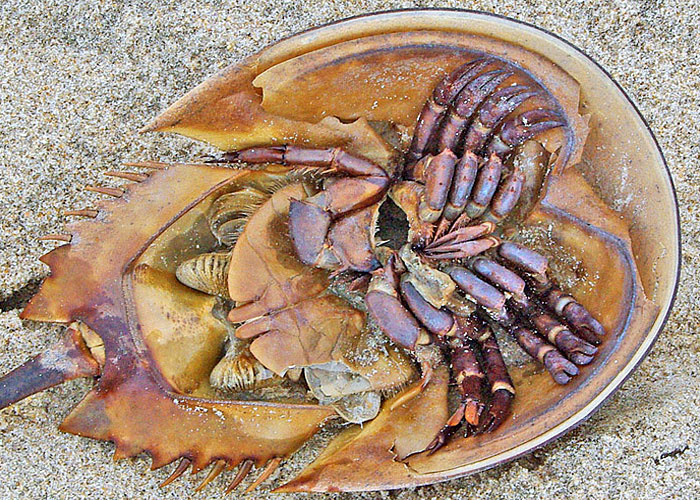Exploring 10 Fun Facts About Horseshoe Crabs

Exploring the Enigmatic World of Horseshoe Crabs: A Fascinating Journey into Ancient Marine Marvels
Beneath the shimmering waves of our oceans lies a world filled with extraordinary creatures, each with its own unique story to tell. Among these captivating marine marvels, horseshoe crabs stand out as ancient, enigmatic beings that have defied the test of time. These prehistoric arthropods, dating back millions of years, hold the key to unraveling mysteries from the depths of Earth's history. From their distinctive appearance and mesmerizing spawning rituals to their valuable contributions in the field of biomedical research, horseshoe crabs continue to amaze and astound scientists and nature enthusiasts worldwide.
In this article, we embark on a thrilling journey into the realm of horseshoe crabs, uncovering ten fascinating facts that shed light on their captivating existence. We delve into their evolutionary origins, exploring their remarkable adaptations and behaviors that have allowed them to survive through numerous mass extinctions. Furthermore, we delve into the intriguing world of their blue blood, unveiling its significance in biomedical research and the medical field.
Join us as we explore their mesmerizing spawning migrations, where vast numbers of horseshoe crabs gather on sandy shores, offering a breathtaking spectacle of nature's wonders. Discover the intricacies of their gender dynamics, where females outnumber males during this crucial period of reproduction. Additionally, we examine the vital role horseshoe crab eggs play as a crucial food source for numerous marine creatures, affecting migratory patterns and ecosystem balance.
As we delve deeper into the world of horseshoe crabs, we uncover their nocturnal habits, their unique compound eyes, and their importance in the realm of biomedical research. We also shed light on the pressing conservation concerns that threaten these ancient creatures and discuss the measures being taken to protect their populations and preserve their invaluable ecological contributions.
READ ALSO » Exploring Seven Different Education Systems Around The World
Prepare to be captivated by the captivating world of horseshoe crabs, as we embark on an unforgettable journey through their extraordinary existence, unveiling the secrets of their ancient heritage and the challenges they face in a rapidly changing world. Brace yourself for a captivating adventure into the depths of the ocean's past, present, and future, where these timeless marvels continue to shape the intricate tapestry of life on our planet.
Exploring 10 Fun Facts About Horseshoe Crab
- Ancient Ancestors
- Unique Body Structure
- Blue Blood
- Migratory Behavior
- Female Dominance
- Eggs as a Food Source
- Nighttime Activity
- Compound Eyes
- Importance in Biomedical Research
- Conservation Concerns

1. Ancient Ancestors
Horseshoe crabs have a remarkably long evolutionary history. Fossil records indicate that their ancestors appeared over 450 million years ago, making them one of the oldest living species on Earth. They have survived multiple mass extinctions and have remained virtually unchanged for millions of years.
2. Unique Body Structure
Horseshoe crabs have a distinctive body structure that sets them apart from other arthropods. Their body is divided into three sections: the head (prosoma), the thorax (opisthosoma), and the long, pointed tail (telson). The prosoma houses their six pairs of appendages, including the impressive chelicerae, which they use for feeding.
3. Blue Blood
One of the most intriguing features of horseshoe crabs is their blue blood. Their blood contains a copper-based molecule called hemocyanin, which transports oxygen. Unlike our red blood cells, horseshoe crab blood is blue due to the presence of this molecule. The unique properties of their blood have made it valuable in the field of biomedical research, particularly in testing for bacterial contamination in medical equipment.
4. Migratory Behavior
Horseshoe crabs exhibit remarkable migratory behavior during the spawning season. Every year, they embark on long journeys to reach their preferred breeding grounds. They gather in large numbers on sandy beaches, usually during high tide, to lay their eggs. This phenomenon, known as the horseshoe crab spawning spectacle, attracts numerous bird species and is a sight to behold.
5. Female Dominance
When horseshoe crabs gather to spawn, the females outnumber the males significantly. For every male horseshoe crab, there can be up to five or six females. This gender imbalance is thought to have evolved as a reproductive strategy to increase the chances of successful fertilization.
6. Eggs as a Food Source
The horseshoe crab eggs laid during the spawning season serve as a vital food source for many marine creatures, including shorebirds and fish. The eggs are rich in nutrients, and their consumption supports the survival and migration of numerous species. In fact, certain bird species time their migration to coincide with horseshoe crab spawning events.
7. Nighttime Activity
READ ALSO » Top 10 Fitness Trends To Try For A Fun And Effective Workout
Horseshoe crabs are primarily nocturnal creatures, preferring to be active during the night. They spend their days buried in the sand or mud, conserving energy and avoiding predators. At night, they emerge to scavenge for food along the ocean floor, using their specially adapted chelicerae to grind up small organisms.
8. Compound Eyes
Horseshoe crabs possess compound eyes that are located on either side of their prosoma. Each eye consists of hundreds of small visual units called ommatidia, which can detect movement and changes in light intensity. While their eyesight is not as sharp as that of some other arthropods, their compound eyes allow them to navigate their surroundings and locate potential mates.
9. Importance in Biomedical Research
As mentioned earlier, horseshoe crabs have contributed significantly to biomedical research. Their blood is highly sensitive to bacterial endotoxins, making it an essential component in the Limulus amebocyte lysate (LAL) test. This test is used to detect bacterial contamination in medical devices, vaccines, and intravenous drugs, ensuring their safety for human use.
10. Conservation Concerns
Despite their remarkable adaptability and longevity, horseshoe crabs face various conservation concerns. Habitat loss due to coastal development, pollution, and overharvesting for bait and biomedical purposes are significant threats to their populations. Some regions have implemented regulations and conservation measures to protect horseshoe crabs, including restrictions on harvesting and monitoring of spawning areas.
Efforts are also underway to raise awareness about the importance of horseshoe crabs and their ecological role. Educational programs and research initiatives aim to promote their conservation and highlight the need for sustainable practices. In addition, organizations work towards promoting the use of alternatives to horseshoe crab blood in biomedical testing, reducing the impact on their populations.
Horseshoe crabs are not only valuable for their role in biomedical research but also for their ecological significance. Their feeding habits help maintain the health of coastal ecosystems by controlling populations of small organisms like mollusks and worms. They are also considered living fossils and provide scientists with valuable insights into the history and evolution of life on Earth.
In conclusion, horseshoe crabs are ancient creatures with a wealth of intriguing characteristics. From their ancient ancestry to their unique blue blood, migratory behavior, and importance in biomedical research, they continue to captivate the curiosity of scientists and nature enthusiasts alike. However, their conservation remains crucial to ensure their long-term survival and maintain the ecological balance of coastal ecosystems.
